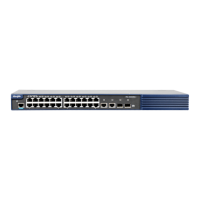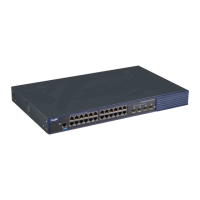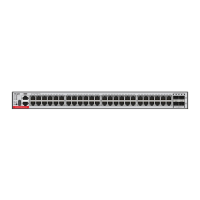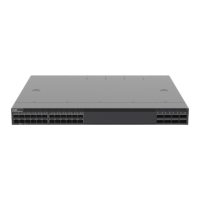Command Reference OSPFv2 Commands
Neighbor ip-address [ poll-interval seconds ] [ priority priority ] [ cost cost ] ]
no neighbor ip-address [ [ poll-interval ] [ priority ] | [ cost ] ]
IP address of the neighbor
(Optional) Specifies the interval of polling neighbors in seconds. The
range is from 0 to 2147483647.
Only the non-broadcast (NBMA) network type supports this option.
(Optional) Configures the priority of non-broadcast network
neighbors. The range is from 0 to 255. Only the non-broadcast
(NBMA) network type supports this option.
(Optional) Configures the cost to each neighbor in point-to-multipoint
network, not defined by default, where the cost configured on the
interface will be used. The range is from 0 to 65535.
Only the point-to-multipoint [non-broadcast] network type supports
this option.
No neighbor is defined by default.
The default neighbor polling interval is 120 seconds.
The default NBMA neighbor priority is 0.
Routing process configuration mode
The RGOS software must explicitly configure the neighbor information for every non-broadcast
network neighbor. The IP address of a neighbor must be the master IP address of that neighbor
interface.
In the NBMA network, if the neighbor device becomes inactive, in other words, if the Hello packet is
not received within the device dead-interval, the OSPF will send more Hello packets to the neighbor.
The interval at which the Hello packets are sent is called the polling interval. When the OSPF starts to
work for the first time, it sends Hello packets only to the neighbor whose priority is not 0, so that the
neighbor whose priority is set as 0 will not participate in the DR/BDR election. When the DR/BDR is
generated, the DR/BDR sends the Hello packets to all neighbors to establish the neighbor
relationship.
Since the point-to-multipoint non-broadcast network has no broadcast capability, neighbors cannot be
found dynamically. So, it is required to use this command to manually configure neighbor. In addition,
it is possible to configure the cost to each neighbor through the cost option for the point-to-multipoint
network type.
The following example declares an OSPF non-broadcast network neighbor, with the IP address
172.16.24.2, priority 1 and polling interval 150 seconds.
Ruijie(config)# routerospf 20
Ruijie(config-router)# network 172.16.24.0 0.0.0.255 area 0
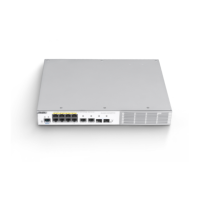
